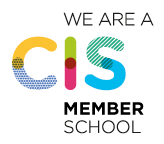In an era where technology intertwines with every aspect of our lives, an intriguing concept has emerged in recent years, captivating attention and revolutionizing engagement strategies across industries – including within education. Gamification, the art of integrating game mechanics into non-game contexts, has swiftly emerged as a transformative force in marketing, education, healthcare, and beyond.
Our core aim at The Global College is to ensure students are equipped with the skills and knowledge to succeed when they leave us for universities around the world, before launching their own careers in whatever sector they choose. As a result, our students explore gamification as part of their IB in Computer Science and will also be able to become familiar with it in some of our extracurricular clubs too.
Defining Gamification
At its core, gamification harnesses the innate human desire for achievement, recognition, and reward by employing game elements like points, badges, leaderboards, and challenges. It takes mundane tasks and transforms them into immersive, enjoyable experiences, fostering motivation, and driving participation.
Examples of Gamification
Let’s delve into a few compelling instances of gamification that have made waves. Take Duolingo, the language-learning app that turns acquiring new language skills into a playful adventure. By earning points for completing lessons, users are incentivized to progress further.
Fitness apps like Strava employ gamification through leaderboards and challenges, transforming fitness routines into exhilarating competitions. Even loyalty programs by airlines and retail outlets leverage gamified structures to incentivize frequent engagement, rewarding customers with status levels and exclusive perks.
Origins and Evolution
The origins of gamification trace back to the early 2000s, gaining momentum as businesses sought innovative ways to engage consumers in the digital landscape. However, its roots can be found in older concepts like loyalty programs and educational games.
Over time, gamification has evolved, leveraging advancements in technology such as augmented reality (AR) and virtual reality (VR) to create more immersive experiences. It has expanded beyond marketing to fields like healthcare, where apps encourage medication adherence or assist in physical therapy through gamified activities.
Learning from Gamification
So, what lessons can we glean from this phenomenon? Gamification excels in tapping into intrinsic motivators, such as a sense of accomplishment or the drive for self-improvement. By understanding these psychological triggers, businesses and educators can tailor experiences to captivate and retain audiences.
Moreover, the element of feedback and progression embedded in gamified systems fosters a continuous cycle of improvement. It teaches us the significance of providing immediate feedback and clear goals to enhance engagement and learning.
Gamification’s success also stems from its ability to foster a sense of community and collaboration. Leaderboards and challenges encourage healthy competition while promoting a sense of belonging among participants.
In conclusion, gamification stands as a testament to the transformative power of merging playfulness with purpose. It’s not merely about incorporating games into tasks but understanding human behavior and motivations deeply. As technology continues to advance, the potential for gamification to revolutionize various sectors remains boundless.
Embracing gamification isn’t just about making tasks more enjoyable; it’s about unlocking human potential. Whether in education, marketing, or healthcare, its ability to captivate, motivate, and drive meaningful engagement holds the key to shaping a more engaging and productive future.
So, let’s embrace the game elements woven into our daily lives, leveraging them to create experiences that inspire, educate, and captivate. After all, when the mundane becomes a playground, the possibilities are endless.




